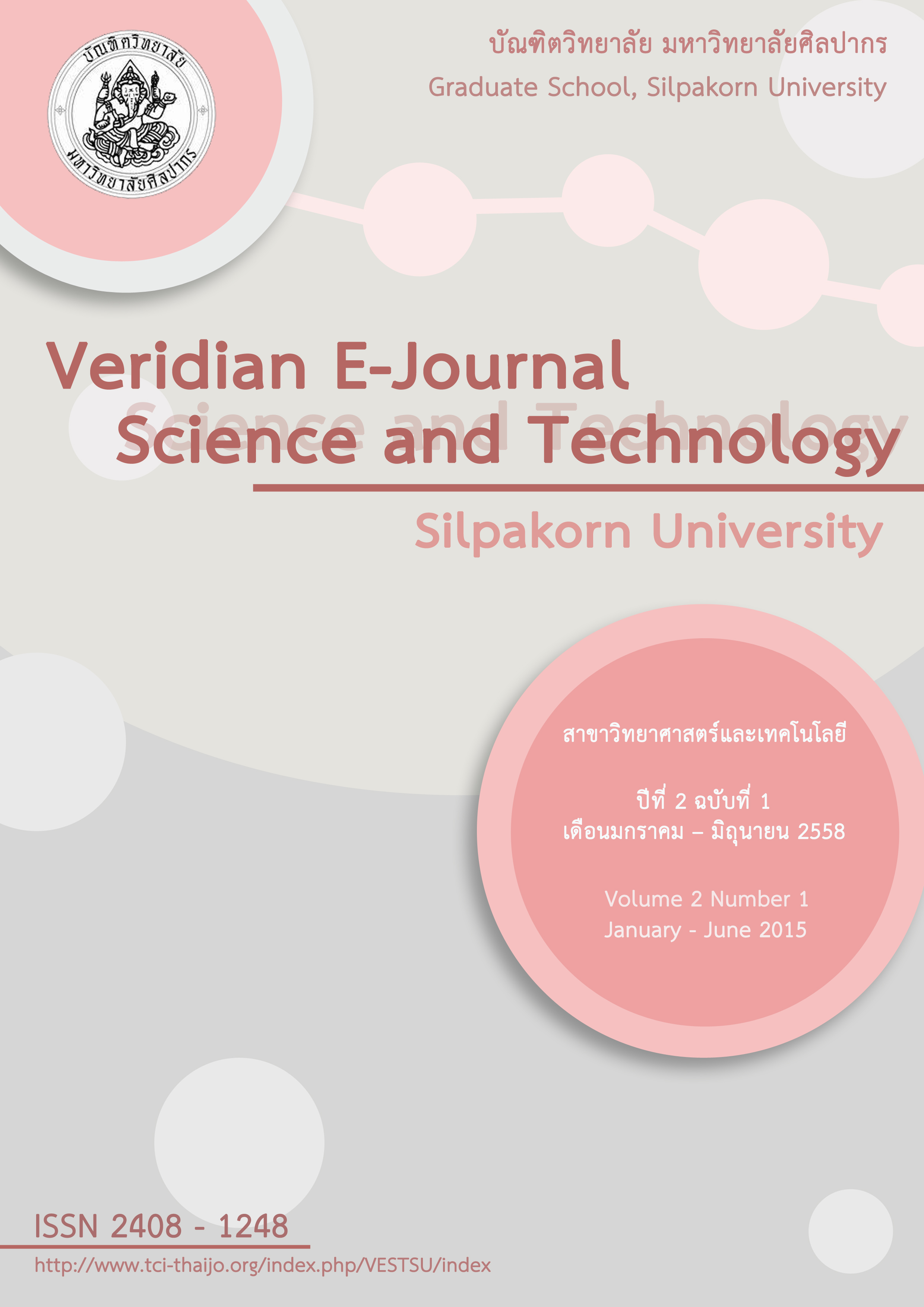กระบวนการปรับสภาพเพื่อเพิ่มประสิทธิภาพการผลิตเอทานอลจากวัสดุเหลือทิ้งทางการเกษตรประเภทลิกโนเซลลูโลส / Pretreatment processes for enhancing the efficiency of ethanol production from lignocellulosic-agricultural wastes
Main Article Content
Abstract
บทคัดย่อ
เชื้อเพลิงชีวภาพจากวัสดุเหลือทิ้งทางการเกษตรประเภทลิกโนเซลลูโลส เป็นการพัฒนาในขั้นที่สองของไบโอเอทานอล แสดงให้เห็นถึงพลังความได้เปรียบทางเศรษฐกิจ และสิ่งแวดล้อมเปรียบเทียบกับไบโอเอทานอลจากวัสดุประเภทแป้ง และน้ำตาล แต่อย่างไรก็ตามยังมีข้อจำกัดทางด้านกายภาพ และทางด้านเคมีซึ่งเป็นปัจจัยหลักของวัสดุประเภทลิกโนเซลลูโลส ส่งผลต่อการย่อยสลายเซลลูโลส และเฮมิเซลลูโลสเพื่อให้ได้น้ำตาลสำหรับขั้นตอนการหมัก โดยเป้าหมายของการปรับสภาพ คือการเพิ่มการเข้าถึงเอนไซม์ปรับปรุงการย่อยเซลลูโลส การปรับสภาพแต่ละวิธีจะมีผลกับองค์ประกอบของเซลลูโลส เฮมิเซลลูโลส และลิกนินที่เฉพาะเจาะจง ดังนั้นวิธีการปรับสภาพ และสภาวะที่ใช้ควรจะเลือกให้เหมาะสมกับขั้นตอนการย่อย และขั้นตอนการหมักที่จะใช้ บทความนี้นำเสนอเทคโนโลยีที่ใช้ในการปรับสภาพ เพื่อนำไปสู่การผลิตเอทานอลจากวัสดุเหลือทิ้งทางการเกษตรประเภทลิกโนเซลลูโลส และชี้ให้เห็นคุณสมบัติที่สำคัญหลายอย่างที่ควรจะกำหนดเป้าหมายสำหรับค่าใช้จ่ายต่ำ และกระบวนการปรับสภาพขั้นสูง
Abstract
Biofuel produced from lignocellulosic materials, so-called second generation bioethanol shows energetic, economic and environmental advantages in comparison to bioethanol from starch or sugar. However, physical and chemical barriers caused by the close association of the main components of lignocellulosic biomass, hinder the hydrolysis of cellulose and hemicellulose to fermentable sugars. The main goal of pretreatment is to increase the enzyme accessibility improving digestibility of cellulose. Each pretreatment has a specific effect on the cellulose, hemicellulose and lignin fraction. Thus, different pretreatment methods and conditions should be chosen according to the process configuration selected for the subsequent hydrolysis and fermentation steps. This paper reviews the most interesting technologies for ethanol production from lignocellulose and it points out several key properties that should be targeted for low-cost and advanced pretreatment processes.

